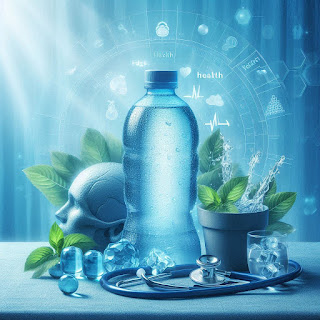10 Homemade Masks for Healthy Skin
Nourish Your Glow Naturally
1. Honey and Oatmeal Mask
Ingredients:
- 1
tablespoon raw honey
- 2
tablespoons finely ground oatmeal
Instructions:
- Mix
the honey and oatmeal to form a paste.
- Apply
it to your face and neck.
- Leave
it on for 15–20 minutes.
- Rinse
off with warm water.
- Honey
moisturizes, while oatmeal gently exfoliates and soothes.
2. Turmeric and Yogurt Mask
Ingredients:
- 1
teaspoon turmeric powder
- 2
tablespoons plain yogurt
Instructions:
- Combine
turmeric and yogurt to create a thick paste.
- Apply
evenly to your skin.
- Let
it sit for 15 minutes.
- Rinse
off gently.
- Turmeric
has anti-inflammatory properties, and yogurt provides probiotics for
healthy skin.
3. Avocado and Banana Mask
Ingredients:
- 1
ripe avocado
- 1
ripe banana
Instructions:
- Mash
the avocado and banana together.
- Apply
the mixture to your face.
- Leave
it on for 20 minutes.
- Rinse
off with cool water.
- Avocado
nourishes with healthy fats, and banana adds vitamins.
4. Cucumber and Aloe Vera Mask
Ingredients:
- ½
cucumber (peeled and blended)
- 2
tablespoons aloe vera gel
Instructions:
- Mix
cucumber puree and aloe vera gel.
- Apply
to cleansed skin.
- Relax
for 15–20 minutes.
- Rinse
off gently.
- Cucumber
soothes, and aloe vera hydrates.
5. Papaya and Lemon Mask
Ingredients:
- 2
tablespoons mashed ripe papaya
- Juice
of half a lemon
Instructions:
- Combine
papaya and lemon juice.
- Apply
to your face.
- Let
it work for 15 minutes.
- Rinse
off thoroughly.
- Papaya
contains enzymes for gentle exfoliation, and lemon brightens.
6. Green Tea and Rice Flour Mask
Ingredients:
- 1
green tea bag (brewed and cooled)
- 2
tablespoons rice flour
Instructions:
- Mix
green tea and rice flour.
- Apply
to damp skin.
- Leave
it on for 15 minutes.
- Rinse
off gently.
- Green
tea is rich in antioxidants, and rice flour exfoliates.
7. Yogurt and Gram Flour Mask
Ingredients:
- 2
tablespoons plain yogurt
- 1
tablespoon gram flour (besan)
Instructions:
- Mix
yogurt and gram flour to form a paste.
- Apply
to your face.
- Allow
it to dry (about 20 minutes).
- Rinse
off with lukewarm water.
- Yogurt
hydrates, and gram flour brightens.
8. Coconut Oil and Brown Sugar Scrub
Ingredients:
- 1
tablespoon coconut oil
- 1
tablespoon brown sugar
Instructions:
- Mix
coconut oil and brown sugar.
- Gently
massage onto damp skin.
- Rinse
off thoroughly.
- Coconut
oil moisturizes, and brown sugar exfoliates.
9. Egg White and Lemon Mask
Ingredients:
- 1
egg white
- Juice
of half a lemon
Instructions:
- Whisk
the egg white and lemon juice.
- Apply
to your face.
- Let
it dry (about 15 minutes).
- Rinse
off gently.
- Egg
white tightens, and lemon brightens.
10. Rosewater and Sandalwood Powder Mask
Ingredients:
- 2
tablespoons rosewater
- 1
tablespoon sandalwood powder
Instructions:
- Mix
rosewater and sandalwood powder.
- Apply
to cleansed skin.
- Leave
it on for 20 minutes.
- Rinse
off with cool water.
- Rosewater
refreshes, and sandalwood has a calming effect.
Remember to patch-test any new mask on a small area of your
skin to ensure you don’t have any adverse reactions. Enjoy pampering your skin
with these natural delights!

.jfif)
.jfif)
.jfif)
